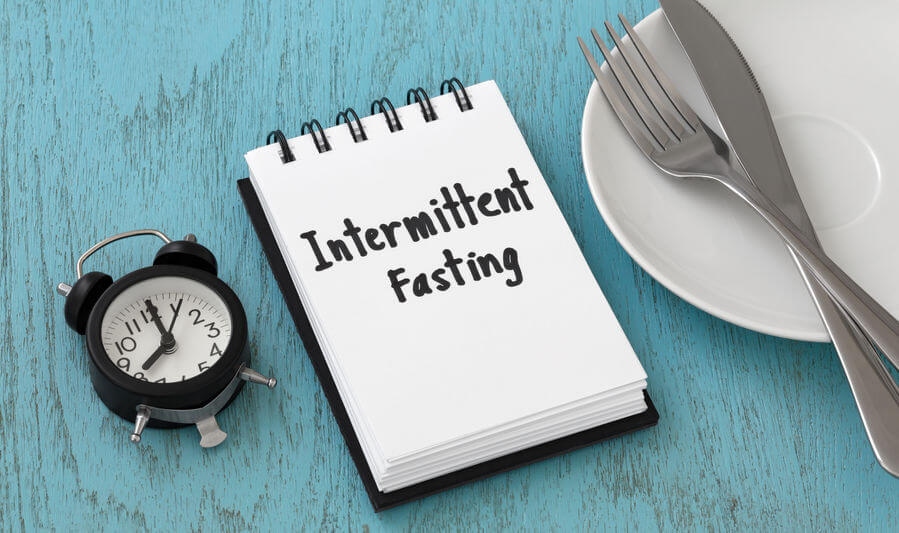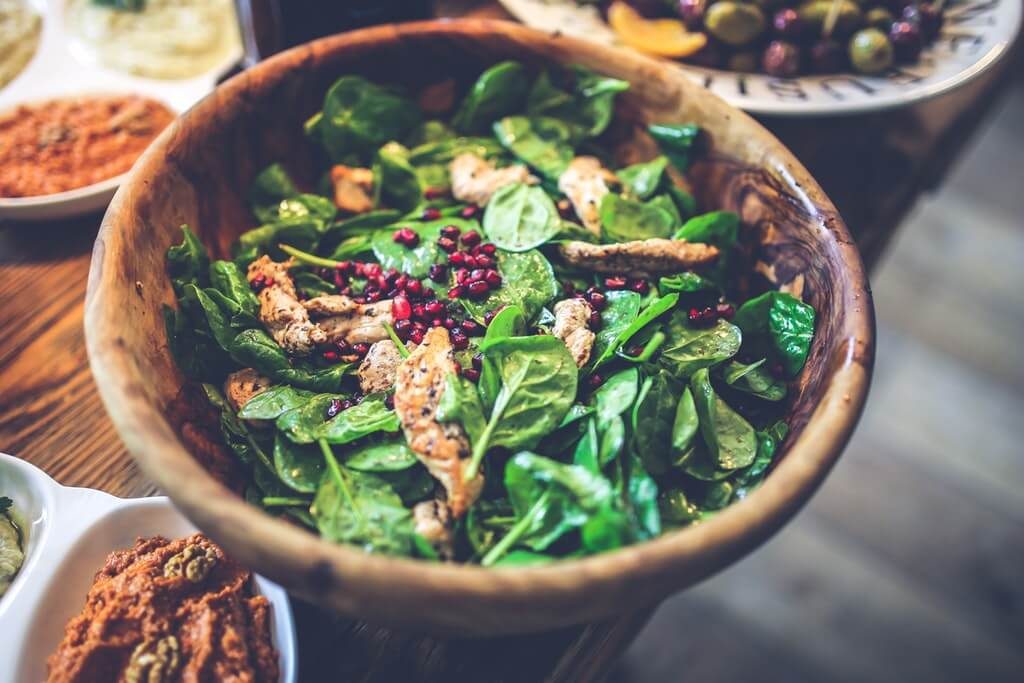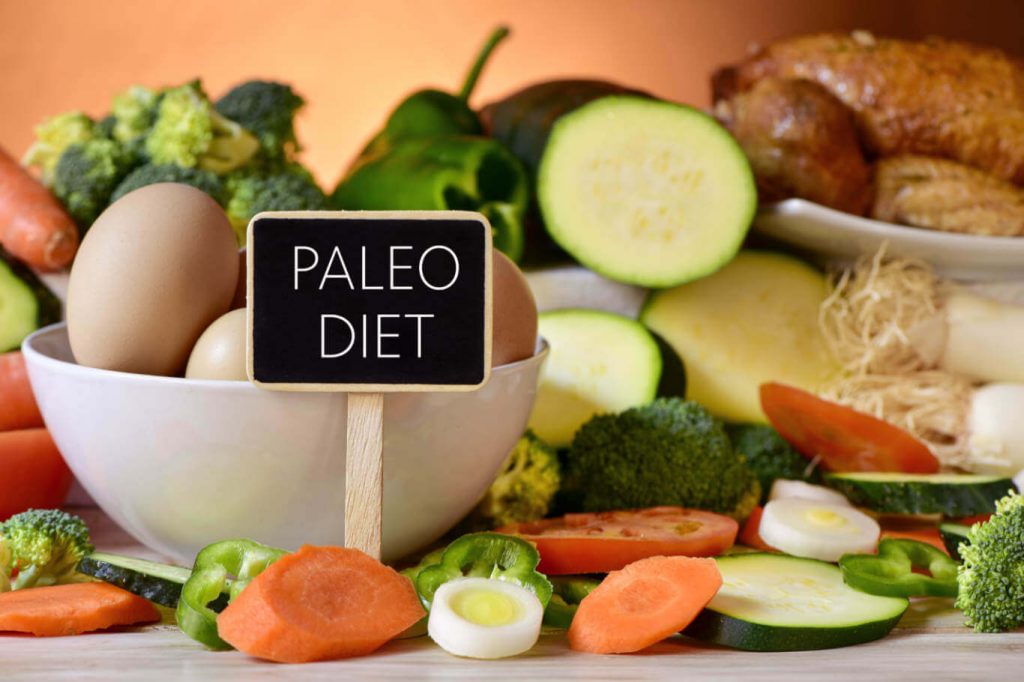The Woman’s Guide to Melting Body Fat with Intermittent Fasting
Intermitting fasting for women is a huge popular topic right now in the nutrition space because more and more women are starting to jump on the bandwagon.
This way of eating is not a diet plan per say, it’s a means of structuring your daily food intake.
This is great news because it means that you can use an intermittent fasting for women diet plan regardless of whether you’re on the Paleo diet, the Crossfit diet plan, keto diet, the Zone diet, or otherwise.
In this short but comprehensive guide, we’re going to give you the in’s and out’s of what intermittent fasting for women is all about.
Let’s get started.
Contents
- What is Intermittent Fasting?
- The Types of Intermittent Fasting You Can Complete
- Benefits of Intermittent Fasting For Women
- Getting Started
- FAQ
- How much weight can you lose with intermittent fasting?
- Can I drink coffee when on an intermittent fasting plan?
- What are the side effects of intermittent fasting?
- Does intermittent fasting affect a woman’s hormones?
- What if I make a mistake and have something to eat during my fast?
- Am I allowed diet soda while on this plan?
- Can you use intermittent fasting with supplements?
- Conclusion
What is Intermittent Fasting?
Intermittent fasting is like the name suggests, a diet plan where you are going to fast for a certain length of time. The term ‘intermittent’ implies that it’s only carried out for so long, upon which eating then resumes.
This is moving back closer to how cavemen used to time their meals during the day.
Often they would spend all day outdoors, either harvesting the land (as in the case of the woman) or hunting down meat (for the men) and then feast at night before going to bed.
You’ll be doing a similar thing with intermittent fasting.
The Types of Intermittent Fasting You Can Complete
Now that you know the basic premise of intermittent fasting, what are the key types that you can complete?
There is more than one type of approach, so it’s important to consider which is the best intermittent fasting for women plan and more specifically, which one is going to be best for you.
Let’s look at the main ones to consider:
The 16/8 Approach
The first type of approach is the 16/8 fasting approach and involves fasting for 16 hours a day and then eating in an 8-hour window. These numbers are not set in stone, some people will instead fast for 14 hours and then have a 10-hour eating window while others may fast all the way up to 20 hours and eat over just a four-hour window at the extreme.
For most women, using 14/10 or 16/8 is the best approach.
Once you begin going past the 16-hour fast, your risk of suffering from menstrual cycle irregularities will be increased and likewise, you’ll also notice your body not responding as well to the fasting protocol.
This is thanks to a shift in hormones that may take place, causing you to become imbalanced and other systems in your body to not work as they should.
A 14 hour fast is a good place for most women to be at and allows you plenty of time to get your target calorie intake in.
Usually, the best way to structure this fast would be to stop eating after dinner before bed and then break the fast around lunchtime.
So for instance, if you plan to eat lunch, this would mean not eating past 10 PM the night before if doing a 14 hour fast or 8 PM the night before if doing a 16 hour fast.
This said, if you don’t go to bed until 10 or 11, not eating after 8 may be quite challenging, so instead you might break the fast at 2 pm and have a late lunch instead. This would allow you to push your eating window until 10 PM.
You’ll need to evaluate your schedule and figure out what will work best for you.
Eat Stop Eat (EOD) Fast
The next method of setting up the fast is the eat stop eat approach, otherwise referred to as every other day fast. This approach is just like the name sounds, you’ll eat every other day.
So rather than consuming calories in a set period of time every 24-hour interval, you consume calories for one full day straight as normal and then fast for the entire next day.
This type of fast does tend to be harder to follow for two reasons. First, you are fasting longer. A 24 hour fast is always going to be harder than a 14-16 hour fast.
Second, all your days don’t have the same routine. Many people are creatures of habit and as such, it’s simply easier if they can keep relatively the same eating agenda.
You’ll be going from one extreme to the next eating all day one day and then fasting the second so this can be a hard thing for many to handle.
This is a type of fast that is not advisable for women because the fasting period is so long.
You’ll get even more hormonal deregulation when fasting for this long and many women will notice their menstrual cycle goes amiss.
24 Hour Fast
Finally, the third type of fast is simply picking a day or possibly two a week and fasting for a complete 24 hours. This type of approach is typically for those who don’t want to do fasting but still want to reap some of the health benefits that go with it.
By spending a day or two a week in a total fast, you’ll still see some excellent health improvements taking place.
This can also go a long way towards helping you maintain a target body weight as well. Because you’ll be fasting for a complete 24 hours, this means that you’ll have those additional calories that can be added as ‘wiggle’ room on your normal daily intake should you indulge in something.
So for those who want to loosen the reigns a little on their day to day diet, this can be a good strategy. For instance, if your normal daily intake is 2000 calories, this means you’ll take in approximately 14000 calories per week.
But, if you fast one of those days, you’re now at 12,000 calories that week. This allows you 2000 calories, or around 300 per day that you can have as leeway to indulge or to eat something you crave while still maintaining your body weight.
Sadly, for most women, this type of fast should not be attempted either as it involves fasting for longer than 16 hours.
Some may find it okay since it’s only happening once or maybe twice per week, but others may notice they lose their menstrual cycle if they attempt it.
So there you have different types of intermittent fasting for women.
Hopefully, you can see very clearly why the classic 16/8 approach is ideal for you. Now let’s go over some of the benefits.
Benefits of Intermittent Fasting For Women
There are many benefits of intermittent fasting both in terms of health as well as fat loss.
Hunger Support
The first big benefit is hunger support. Now you might be thinking, if you’re fasting, wouldn’t you be hungrier?
But here’s how this works.
At first, yes, you will probably be hungrier than if you weren’t fasting. Your body has not adapted to this type of eating schedule and will fight you. If you push through, however, you will adapt and when you do, you’ll be amazed at how little hunger you actually feel.
Your body will be releasing endorphins during the fast, which helps you suppress hunger and also gives you an energy boost (more on that in a second).
Then when you do get to eat, you’ll be cramming your total daily calorie intake into just 8 or 10 hours, so this goes a long way towards making sure that you’re feeling satisfied.
If you’re someone who is rarely satisfied with diet meals that contain just 250-350 calories, then you’ll love the fact that with this approach, you can probably boost your meals up to 400-600 calories.
This gives you far more freedom as well in terms of overall meal choices. Foods that were never possible on your normal diet plan suddenly become more possible because you have a higher calorie allowance for that meal.
Note that your total daily calorie intake, however, stays the same. It’s just that rather than eating 6 smaller meals like you probably did on the conventional approach, you’re now eating two to four larger ones.
Calorie Management
Which brings us to the next benefit, calorie management.
It becomes a lot easier to manage your target calorie intake when it’s only spread out over a couple of meals. Not only is meal planning easier since you have fewer meals to plan and more options available for those meals (thanks to a higher calorie intake per meal), but there is also a lower risk of overeating.
Think about this.
If you have any degree of inaccuracy when measuring out your food intake, it can add up. If you eat six small meals a day and are accidentally (without knowing) underestimating your true calorie intake by about 100 calories per meal, that’s 600 calories per day you are eating more than you thought.
Since it takes 500 calories per day to lose one pound of body fat per week, what do you think this does to your end results?
It completely eliminates them.
But if you’re only eating three meals per day, at most you’ll underestimate by 300 calories. And even still, because those meals are bigger and allow for more calories, the chances that you’re underestimating is lower since you’re not trying to cram as much food into 300 calories as you can.
This can go a long way towards improving your overall weight loss results.
Energy Levels
Another benefit that most people state they receive when doing intermittent fasting is increased energy levels.
This may be contrary to what most believe about doing intermittent fasting since food provides energy, but you’re eating less.
What you need to remember here is that it’s more of an issue of calorie management. As long as you are getting sufficient calories in at some point over the 24 hour period, your body should have the energy necessary to complete day to day activities.
Of course, it is important to remember that you’ll still be on a reduced-calorie diet if weight loss is your goal.
So some drop in energy is to be expected, but it won’t be greater just because you’re on an intermittent fasting plan. In fact, you might notice the opposite.
This is because as you fast, you’re going to get the release of endorphins in the bloodstream and these endorphins are going to regulate the release of energy in the body.
The more endorphins, the more energy and this tends to hold true for the length of the fast.
At first, you may notice yourself more tired as the body adapts, but after adaptation has taken place, you’ll notice the opposite.
Carbohydrate Regulation/Insulin Sensitivity
One key benefit of the intermittent fasting diet is improved insulin sensitivity (source). Many disease stem out of being insulin resistant including heart disease, diabetes, stroke, and so on.
When your body is resistant to insulin, this means your blood glucose level isn’t as regulated and there’s a greater chance you’ll have excess sugar sitting around in the bloodstream.
Intermittent fasting helps to improve insulin sensitivity, so rather than being resistant to the effects of insulin release, your body is more responsive.
This is big news for those who are worried about diabetes as well as insulin resistance since the latter is one of the hallmark traits of diabetes.
This said, do keep in mind that if you already have diabetes, you’ll want to talk to your treating physician before starting an intermittent fasting plan. In some cases, it may do you more harm than good once you already have the condition as it will lead to a significant drop in blood glucose levels.
This is a better strategy to use before it’s gotten to the point you’re actually suffering from diabetes.
Lowered Cholesterol
Another health benefit that intermittent fasting offers is lowered cholesterol levels. If heart disease and/or stroke run in your family, you’re probably already looking at what you can do to decrease your cholesterol. Intermittent fasting is a great choice.
Research has shown that those who intermittent fast show decreased risk factors for heart attacks thanks to improved cholesterol profiles.
This effect will, of course, be amplified if you’re choosing healthy foods when you do eat such as lean proteins, healthy fats, fresh fruits as well as vegetables.
Deep-fried foods or processed carbohydrates should be avoided as even with the timing of your meals as such, they can lead to elevated cholesterol.
Improved Cognitive Performance
The impact that intermittent fasting for women typically has on the brain is also a point of interest for many. If you often feel foggy minded during the day or are unable to focus, intermittent fasting can help. By using this approach, research has illustrated you’ll notice improved overall cognitive function (source).
Doing such an approach actually has anti-aging benefits on the brain and you’re less likely to suffer from cognitive decline due to aging.
That may not yet be a concern for you, but if it is, you’ll certainly want to take advantage.
The increase in cognitive energy you’ll experience is typically due to improved endorphin levels.
Lower Inflammation
Finally, one last big benefit that intermittent fasting for women has to offer is a lowered overall risk of inflammation.
Inflammation is also at the heart of so many different diseases today including obesity, diabetes, heart disease, stroke, arthritis, and even some auto-immune diseases as well.
The good news?
You can do your part to help minimize the chances that inflammation becomes something that you have to deal with (source).
Intermittent fasting is a great start and to that, also be sure that you’re cutting out all refined grains and fats and instead, feasting on whole grains, fresh fruits, and vegetables, along with healthy sources of fat.
It’s also important to do as best as you can to reduce the stressors in your life as too much stress can put you on a fast track to inflammation.
So there you have some of the most common reasons to consider intermittent fasting for women approach.
Some of these benefits won’t become visible right away but rather you’ll need to wait to see them but they will be worth it.
Getting Started
Now that you’ve read about what intermittent fasting is, you might want to do whatever you can to get started.
This is great news because you’re about to see what this approach really has to offer.
Here are the steps to consider.
1. Decide On Your Fasting Type
The first thing you need to do is decide upon the type of fast you want to do. Unless you’re going to do an occasional 24 hour fast (not EOD), you’ll likely be selecting the 16/8 or 14/10 approach.
For the purpose of illustration, we’ll be using the 16/8 approach here.
Now consider what time you typically go to bed and when you want to break your fast. Let’s say you normally go to bed at 11 PM and you have a quick workout at 1:30 PM during lunch break, for example.
This would be a good argument for doing a fast from 9 PM until 1 PM the next day.
You can finish your last meal at 9 PM, allow for two hours of digestion before bed, and then break the fast the next day just in time for a pre-workout meal before you hit the gym most days.
If your daily schedule was different, you might structure this differently but in this scenario, it works well.
2. Determine Your Calorie Intake and Meal Targets
Next, you need to choose your calorie target. Remember that this will be done in much the same way as you would any regular diet plan.
Take your resting metabolic rate, add an activity factor and then subtract by 250-500 calories per day to arrive at your target calorie intake for weight loss (assuming that is your goal).
If your goal was to build muscle, you’d instead add 250-500 calories to your daily diet plan.
Once you have this, you’ll now want to figure out your macros if you so choose.
Because this plan doesn’t give firm requirements for macros, you can essentially make them whatever you like. A good mix of proteins, carbs, and fats tends to work best for most people.
Now you need to select how many meals you want to eat each day. You’ll be eating from 1 PM until 9 PM, so that’s your 8-hour eating window.
Some people will choose to eat three nice big meals while others may choose to have four or even five.
Let’s say you decide to have four on workout days and three on non-workout days.
Likely you’ll have a meal at 1 PM (your pre-workout meal), a meal at 4:30 PM (your post-workout meal), another meal at 7 PM (dinner) and another at 9 PM (pre-sleep snack).
On non-workout days, you might just skip over the post-workout meal and move your dinner to 6 pm instead.
You’d now figure out how many calories you want in each of these meals, which would then give you a good guidance on how to structure your day.
3. Select Your Foods
Next up you need to be selecting the foods you’re eating in your diet plan.
The beautiful thing about intermittent fasting for women is there are no hard and fast rules. Whether you want to do a keto diet, a paleo approach or using the IIFYM diet set-up, you can.
Just remember to keep health in mind. We strongly advise against choosing heavily processed or refined foods just because you can.
You may be used to having meals that are 300 calories that the thought of having 600 calories available makes you automatically want to turn to pizza or burgers. Refrain from doing so.
While the odd indulgence is fine and understandable, you don’t want to turn your intermittent fasting approach into an excuse to eat poorly.
Here are some of the best foods to consider adding to your diet plan.
Proteins:
- Chicken breast
- Turkey breast
- Lean red meat
- Whitefish/cod
- Salmon
- Whey protein powder
- Low-fat dairy products
- Pork tenderloin
- Tofu
Carbohydrates:
- All fresh fruits and vegetables
- Oatmeal
- Sweet potatoes
- Brown rice
- Plain popcorn
- Ezekiel bread
Healthy Fats:
- Olive oil
- Coconut oil
- Grass-fed butter
- Nuts and seeds
- Natural peanut butter
While this list is not exhaustive by any means, it should give you a fairly good idea of what you should be eating when on this approach.
The most important thing to remember is to think clean – meaning less processed.
When you eat foods in their natural state, they’ll almost always be better for you.
Let’s now look at what a sample meal plan might look like using this example.
Day 1 (workout day)
- 1 PM – 1 can of tuna mixed with ¼ cup sautéed vegetables, ½ cup white rice, and one banana.
- 4:30 PM – 1 scoop whey protein powder mixed with unsweetened almond milk, 1 bagel with a tablespoon of jam or honey.
- 7 PM – 6 oz. chicken breast served with 1 cup whole grain pasta, ½ cup tomato-based sauce, 2 tbsp. parmesan cheese drizzled on top. Have greeny leaf salad as a side dish with 1 tbsp. olive oil as a salad dressing.
- 9 PM – 1 cup plain, low-fat Greek yogurt with 1 cup fresh berries and 1 tbsp. slivered almonds.
Day 2 (non-workout day)
- 1 PM – 4 oz. grilled chicken breast served inside one large whole wheat pita wrap. Stuff this with diced peppers, and mushrooms and then layer in some shredded cheese. Place under the broiler to melt the cheese before serving. One apple on the side.
- 6 PM – 5 oz. grilled lean steak served with 1 cup baked sweet potato with 1 tbsp. grass-fed butter, 1 tbsp. shredded cheese, and fresh chives. Serve with 1 cup mixed steamed vegetables.
- 9 PM – 1 protein pancake made with 1 scoop whey protein powder ¼ cup raw oats, 1 whole egg, ½ banana and then a little stevia as desired. Cook like a normal pancake and then drizzle with some sugar-free maple syrup or add a thin layer of peanut butter.
Hopefully, this now gives you some sort of idea of how you would structure your daily diet using an intermittent fasting approach.
It’s vital that all the meals you eat are very well balanced and contain a mixture of carbs, proteins, and fats.
While it’s fine to cut fat out of the pre and post-workout meal, you do want to get them in at other meals during the day.
FAQ
How much weight can you lose with intermittent fasting?
There really is no limit to how much weight can be lost. This will all come down to your total calorie intake and how long you carry out that intake.
Weight loss, like any other meal plan, should be taken slow and steady for maximum results. This is not a quick-fix plan.
Can I drink coffee when on an intermittent fasting plan?
Great news coffee lovers, coffee is permissible while on the plan. But do note that you should not add sugar, cream, or any other calorie-containing substances to your coffee.
You’ll also want to be careful about adding artificial sweeteners because those have been shown to spike blood glucose levels and if you do that, you may find it harder to maintain the fast due to hunger.
What are the side effects of intermittent fasting?
There are no real side effects to this type of diet set-up. Some people may notice some hunger, especially when they first start before their body has adapted. Others may notice they feel lightheaded or anxious.
These are all signs of low blood glucose levels and should be resolved once you’ve been fasting for a longer period of time.
Note, however, in particular to intermittent fasting for women, if the fast is carried on longer than 16 hours, there is a chance that you may see interference with your monthly menstrual cycle.
If this occurs, shorten the fast immediately so that you begin getting your period once again.
Does intermittent fasting affect a woman’s hormones?
Related to the above, intermittent fasting, especially if it’s carried out for a lengthy period of time can influence your hormone levels. If you start to notice you don’t feel like yourself and/or your period stops, it’s time to make the fast shorter.
It should also be noted that women who are trying to get pregnant, are pregnant, or breastfeeding should not attempt an intermittent fasting protocol.
What if I make a mistake and have something to eat during my fast?
If you do happen to make a mistake, try not to sweat it. While it’s frustrating, what’s more important is that you get back on the plan and keep going.
Am I allowed diet soda while on this plan?
Yes, but only in the gap of those 8 hours where you are allowed to eat, not during the fast. Even though diet sodas usually have “sugar-free” on them, it doesn’t mean they don’t have other artificial sweeteners.
And we know that some artificial sweeteners can raise blood glucose levels, therefore, we recommend sticking to a cup of plain black coffee or better yet with water during the 16-hour fasting period.
Can you use intermittent fasting with supplements?
As long as the workout supplements you’re using do not impact your blood sugar, you can certainly use them with this diet plan.
Conclusion
There you have the straight facts about intermittent fasting.
Hopefully, this helps you better understand whether intermittent fasting would be right for you as a long term strategy to not only reach your goal body weight but also improve your health.
[starbox id=shannonclarkwriter]









